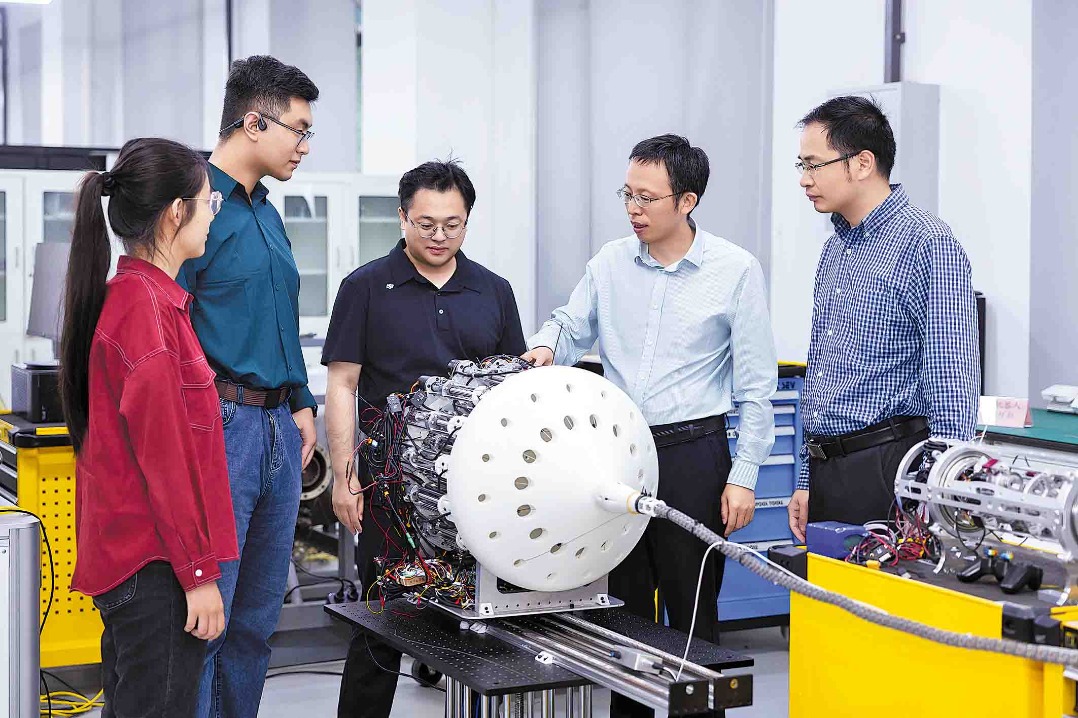Scorching heat acute reminder EU should be open to green tech


When Europe's metallic roads start melting from the heat this summer, it will be wise not to miss the coat of protectionism that is heating up the surface. As the mercury rises, so does the urgency to tackle climate change. Yet the European Union's tariff barriers on Chinese electric vehicles risk upsetting the green momentum Europe claims to champion.
The EU imposed tariffs of up to 45.3 percent on Chinese-built battery-electric vehicles in October to stop them from "flooding" their market. Now, facing disruption because of the tariffs the United States has imposed, Beijing and Brussels have floated the idea of lifting the tariffs through possible commitments on minimum prices, known as price undertakings, for imported cars.
In the meantime, Chinese carmakers such as BYD and Chery are selling more plug-in hybrids in the EU to adapt to the tariffs. The two brands sold, respectively, 3,269 and 757 plug-in hybrids in the EU market in March, up from near zero sales in July 2024 when provisional tariffs were first introduced.
What does this mean? Instead of fostering pure-electric innovation, Europe is inadvertently nudging Chinese manufacturers to focus on hybrids as a "backdoor" to the market.
The EU's approach to climate leadership must evolve. Walls and levies on green technology will not help any country decarbonize. Imagine instead a Europe that opens its market more generously, encouraging fair competition in BEVs while partnering on shared innovation. Enabling global supply chains, sharing battery and EV technology, and importing Chinese efficiency could lower carbon dioxide across the board, not just within the bloc.
New energy vehicles have emerged as the growth engine of China's vehicle exports, with 296,000 units exported in May, accounting for 43 percent of total exports. Cumulative January to May NEV exports reached 1.16 million units, up 33 percent year-on-year.
Moreover, recent actions suggest China's carmakers are not standing still. While the EU pushes tariffs, these companies are engaging in localization by establishing sales infrastructure, rolling out dual pillars of plug-in hybrid vehicles and BEVs, and even building European assembly plants. Hybrid-first strategies are no accident. They are adaptive strategies to navigate policy and demand.
If Europe is serious about climate action, it must stop viewing trade as a zero-sum contest and instead use global competition to its advantage. For example, the EU can phase down tariffs on BEVs, allowing high-efficiency and low-emission vehicles to proliferate regardless of their origin.
Efforts can also be made to encourage joint ventures and co-investment, supporting European battery and EV clean-tech while benefiting from Chinese scale. Also, harmonizing regulations on emissions, data security and vehicle standards would reduce fragmentation and unlock innovation. Meanwhile, the EU can use market openness as leverage. By offering access, the EU can nudge Chinese companies toward deeper commitments: localized R&D, supply-chain investment and shared intellectual property.
Let us not miss the bigger picture. Climate change isn't waiting for European factories to catch up. It is here, and intensifying every summer. Rather than combat global warming with green protectionism, Europe should embrace global collaboration and shared opportunities.
Just as the sun's relentless rays scorch the continent, so must Europe's ambition burn through trade barriers to meet climate reality. A truly green economy demands open markets, not closed doors.


































